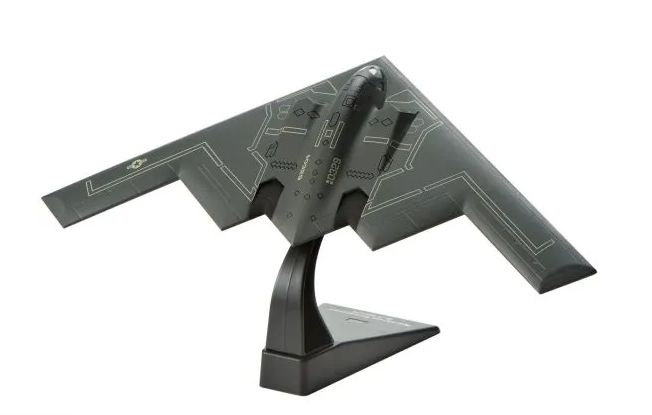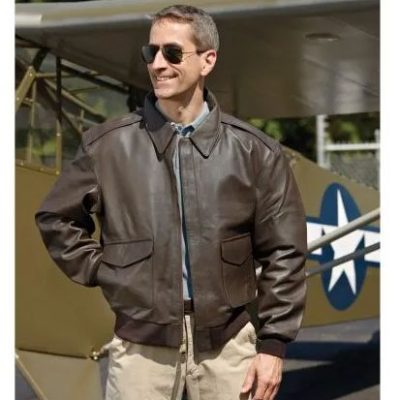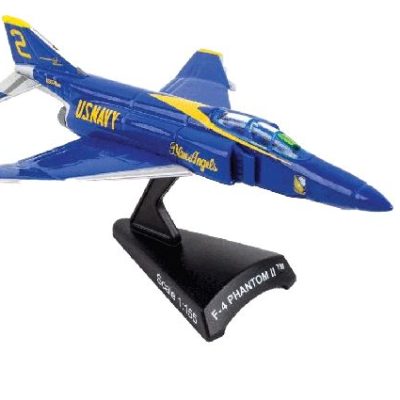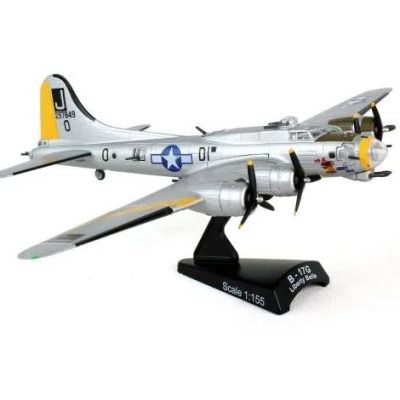Description
Northrop Grumman B-2A Spirit Die-Cast Model
Type of Aircraft: B-2A Spirit super-sonic Delta Wing Stealth Bomber heavy strategic bomber
Nation/Service of Origin: USAF
Period Operation: The B-2 was first used in combat to drop conventional, non-nuclear ordnance in the Kosovo War in 1999. It was later used in Iraq, Afghanistan, and Libya.
Produced: From: 1998 to 2000
Role: High Attitude nuclear bomber, Expects to be in service until 2032 by the USAF.
Manufacturer: Northrop Grumman
Historical Data of Aircraft:
From Wikipedia, the free encyclopedia
The Northrop Grumman B-2 Spirit, also known as the Stealth Bomber, is an American heavy strategic bomber, featuring low-observable stealth technology designed to penetrate dense anti-aircraft defenses. A subsonic flying wing with a crew of two, the plane was designed by Northrop (later Northrop Grumman) and produced from 1987 to 2000. The bomber can drop conventional and thermonuclear weapons, such as up to eighty 500-pound class (230 kg) Mk 82 JDAM GPS-guided bombs, or sixteen 2,400-pound (1,100 kg) B83 nuclear bombs. The B-2 is the only acknowledged in-service aircraft that can carry large air-to-surface standoff weapons in a stealth configuration.
Development began under the Advanced Technology Bomber (ATB) project during the Carter administration, which cancelled the Mach 2-capable B-1A bomber in part because the ATB showed such promise. But development difficulties delayed progress and drove costs up. Ultimately, the program produced 21 B-2s at an average cost of $2.13 billion (in 1997 dollars), including development, engineering, testing, production, and procurement.Building each aircraft cost an average of US$737 million, while total procurement costs (including production, spare parts, equipment, retrofitting, and software support) averaged $929 million per plane.
The project’s considerable capital and operating costs made it controversial in the U.S. Congress even before the winding-down of the Cold War dramatically reduced the need for a stealthy aircraft designed to strike deep in Soviet territory. Consequently, in the late 1980s and 1990s lawmakers shrank the planned purchase of 132 bombers to 21.
As of 2015, twenty B-2s were in service with the United States Air Force, one having been destroyed in a 2008 crash. The Air Force plans to operate them until 2032, when the Northrop Grumman B-21 Raider is to replace them.
The B-2 can perform attack missions up to 50,000 feet (15,000 m); it has an unrefueled range of more than 6,000 nautical miles (6,900 mi; 11,000 km) and can fly more than 10,000 nautical miles (12,000 mi; 19,000 km) with one midair refueling. It entered service in 1997 as the second aircraft designed with advanced stealth technology, after the Lockheed F-117 Nighthawk attack aircraft. Primarily designed as a nuclear bomber, the B-2 was first used in combat to drop conventional, non-nuclear ordnance in the Kosovo War in 1999. It was later used in Iraq, Afghanistan, and Libya.





